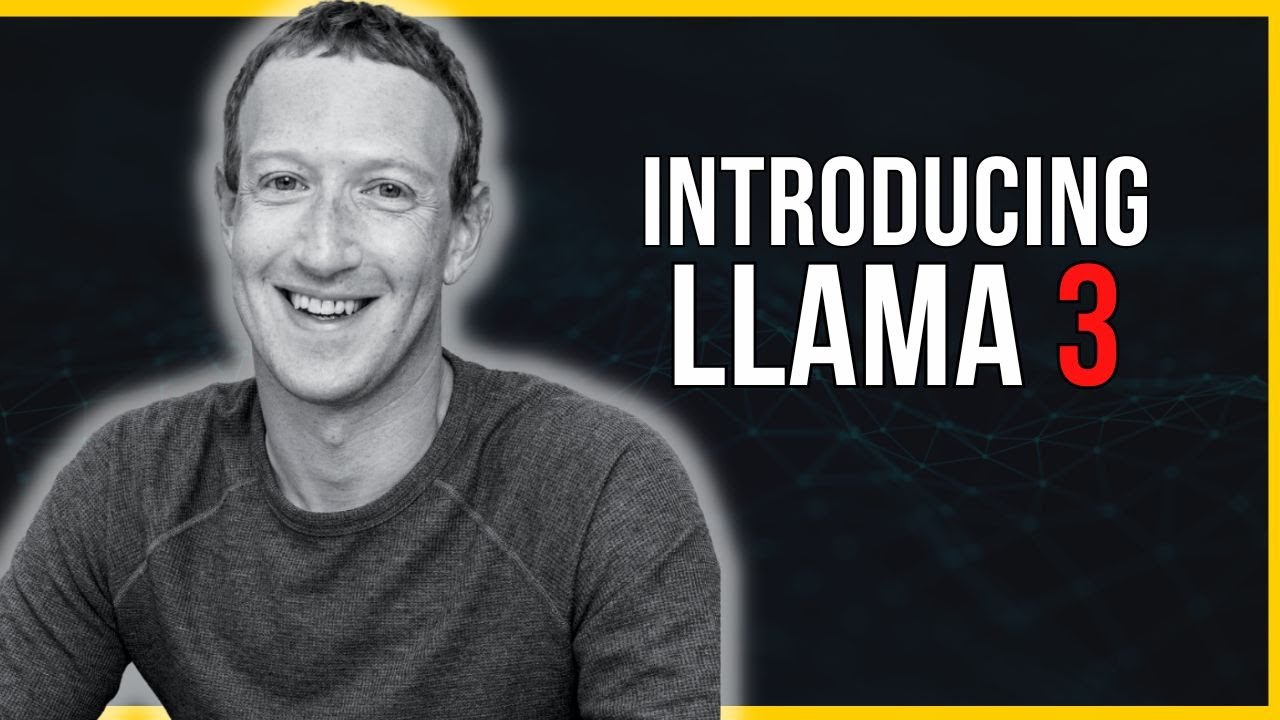Metas LLAMA 405B Just STUNNED OpenAI! (Open Source GPT-4o)
Summary
TLDRMeta has unveiled Llama 3.1, a 45 billion parameter language model that excels in reasoning, tool use, and multilinguality. The model, which boasts a 1208 token context window, is the largest open-source model released to date, outperforming other models in various benchmarks despite its smaller size. Llama 3.1 also integrates with platforms like AWS and Nvidia, and is set to be deployed across Meta's apps. The research paper hints at future advancements, suggesting the potential for multimodal capabilities, further solidifying AI's role in solving complex challenges.
Takeaways
- 🚀 Meta has released Llama 3.1, a 45 billion parameter language model, which is the largest open source model ever released.
- 🔍 The 870 billion model has been updated with improved performance and capabilities.
- 🌐 Llama 3.1 shows significant improvements in reasoning, tool use, multilinguality, and a larger context window.
- 📈 Benchmark results for Llama 3.1 exceed expectations, with the model performing on par with or better than state-of-the-art models like GPT-4 and Claude 3.5.
- 📚 Meta has published a research paper detailing the improvements and capabilities of Llama 3.1.
- 🔄 Context window for all models has been expanded to 1208 tokens, allowing for handling larger code bases and more detailed reference materials.
- 🛠️ Llama 3.1 supports tool calls for functions like search, code execution, and mathematical reasoning, and has improved reasoning for better decision-making and problem-solving.
- 🌐 The model is designed to be scalable and straightforward, opting for a standard decoder-only transformer model architecture.
- 🖼️ Llama 3.1 is being integrated with image, video, and speech capabilities, aiming to make the model multimodal, although these features are still under development.
- 🌐 Llama 3.1 is available for deployment across platforms like AWS, Databricks, Nvidia, and GROQ, demonstrating Meta's commitment to open source AI.
Q & A
What is the significance of Meta releasing Llama 3.1?
-Meta's release of Llama 3.1 is significant as it is a large language model with 45 billion parameters, marking it as one of the largest open-source models ever released. It brings improvements in reasoning, tool use, multilinguality, and a larger context window.
What updates did Meta make to their 870 billion parameter models?
-Meta updated the 870 billion models with new, improved performance and capabilities, enhancing their reasoning, tool use, and multilingual abilities.
What are the notable features of the 405 billion parameter Llama model?
-The 405 billion parameter Llama model offers impressive performance for its size, supports zero-sha tool usage, improved reasoning for better decision-making and problem-solving, and has an expanded context window of 1208 tokens.
How does Llama 3.1 compare to other state-of-the-art models in terms of benchmarks?
-Llama 3.1 benchmarks are on par with or exceed state-of-the-art models in various categories, including tool use, multilinguality, and GSM 8K, showcasing its effectiveness despite having a smaller parameter size compared to models like GPT-4.
What is the context window size for the updated Llama models?
-The context window for all updated Llama models has been expanded to 1208 tokens, allowing them to work with larger code bases or more detailed reference materials.
How does Meta's commitment to open source reflect in the Llama 3.1 release?
-Meta's commitment to open source is evident in the Llama 3.1 release as they are sharing the models under an updated license that allows developers to use the outputs from Llama to improve other models, including synthetic data generation and distillation.
What is the potential impact of Llama 3.1 on AI research and development?
-The release of Llama 3.1 could potentially drive advancements in AI research by enabling the creation of highly capable smaller models through synthetic data generation and distillation, thus fostering innovation and solving complex challenges.
How does Llama 3.1's architecture differ from other models like Gemini or GPT?
-Llama 3.1 uses a standard decoder-only transformer model architecture with minor adaptations, opting for simplicity and training stability over more complex architectures like a mixture of experts, which is used in some other models.
What are the multimodal capabilities that Meta is developing for Llama 3?
-Meta is developing multimodal extensions for Llama 3, integrating image, video, and speech capabilities via a compositional approach. These capabilities are still under development and not yet broadly released.
How does Llama 3.1 perform in human evaluations compared to state-of-the-art models?
-In human evaluations, Llama 3.1 holds up well against state-of-the-art models, often winning or tying with them around 60% to 75% of the time, which is impressive considering its smaller size and cost-effectiveness.
What are the potential use cases for Llama 3.1's tool use capabilities?
-Llama 3.1's tool use capabilities can be utilized for a wide range of applications, including executing code, generating tool calls for specific functions, and potentially becoming a key component in achieving more general intelligence by executing a wider range of tasks.
Outlines

This section is available to paid users only. Please upgrade to access this part.
Upgrade NowMindmap

This section is available to paid users only. Please upgrade to access this part.
Upgrade NowKeywords

This section is available to paid users only. Please upgrade to access this part.
Upgrade NowHighlights

This section is available to paid users only. Please upgrade to access this part.
Upgrade NowTranscripts

This section is available to paid users only. Please upgrade to access this part.
Upgrade Now5.0 / 5 (0 votes)





